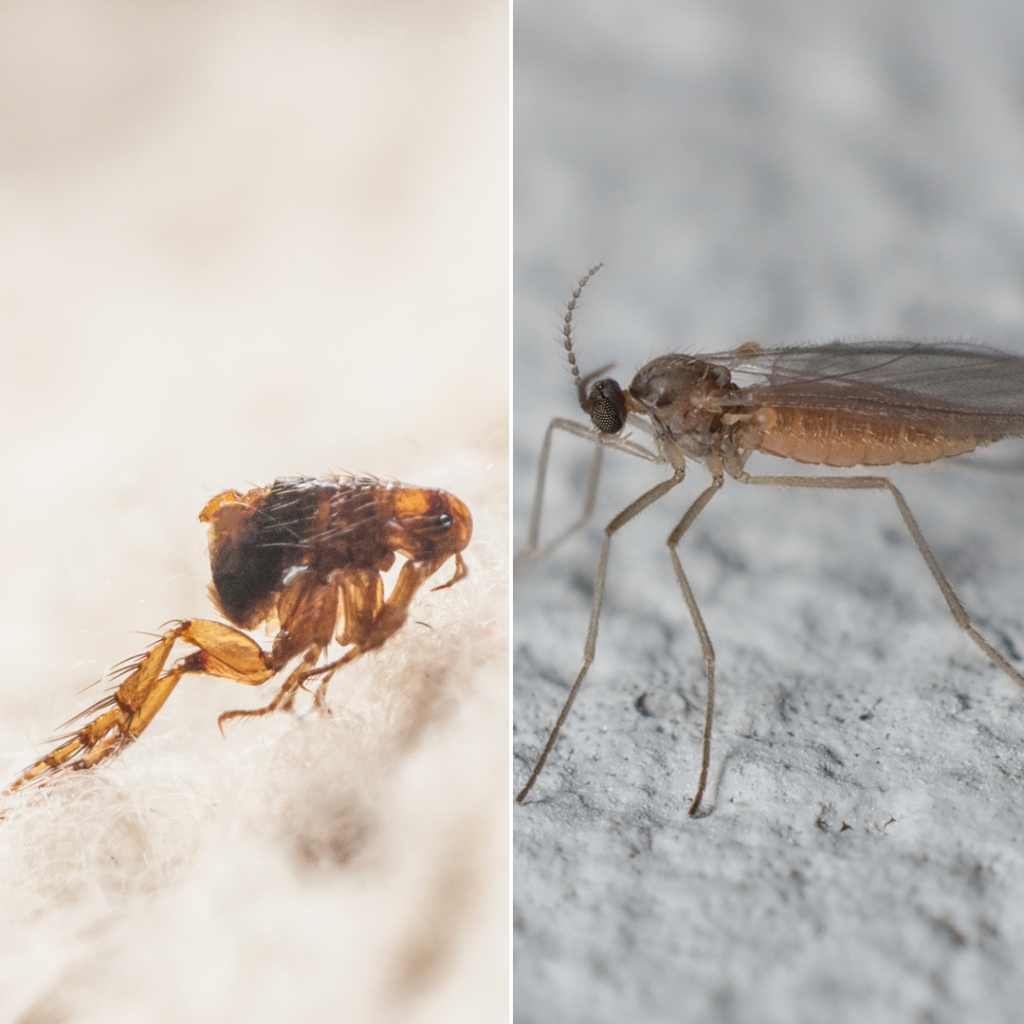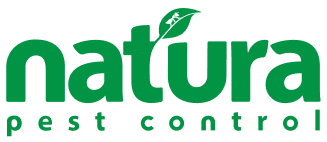When it comes to dealing with pests, knowing what you’re up against is half the battle. Fleas and gnats are two common nuisances that can take over your home, but they may be easily confused because of their small size!
Understanding the difference between fleas and gnats can help you control and prevent a serious infestation. In this blog, we’ll dive into the characteristics, behaviors, and impacts of fleas and gnats so you can know every difference between these annoying pests!
Understanding Fleas
When it comes to pests, fleas are some of the most notorious troublemakers, especially for pet owners. Let’s look closer at what makes fleas tick, from their appearance to their behavior and the problems they can cause.
Description and Characteristics
Fleas are tiny, usually between 1.5 to 3.3 millimeters in length. They’re dark brown or reddish-brown with long legs designed for jumping great distances. Their piercing mouthparts are perfectly adapted for sucking blood from their hosts.
These pests love warm, humid places. They’re often found in homes in pet bedding, carpets, and upholstered furniture. Outdoor areas where pets roam, like yards and gardens, also regularly harbor fleas.
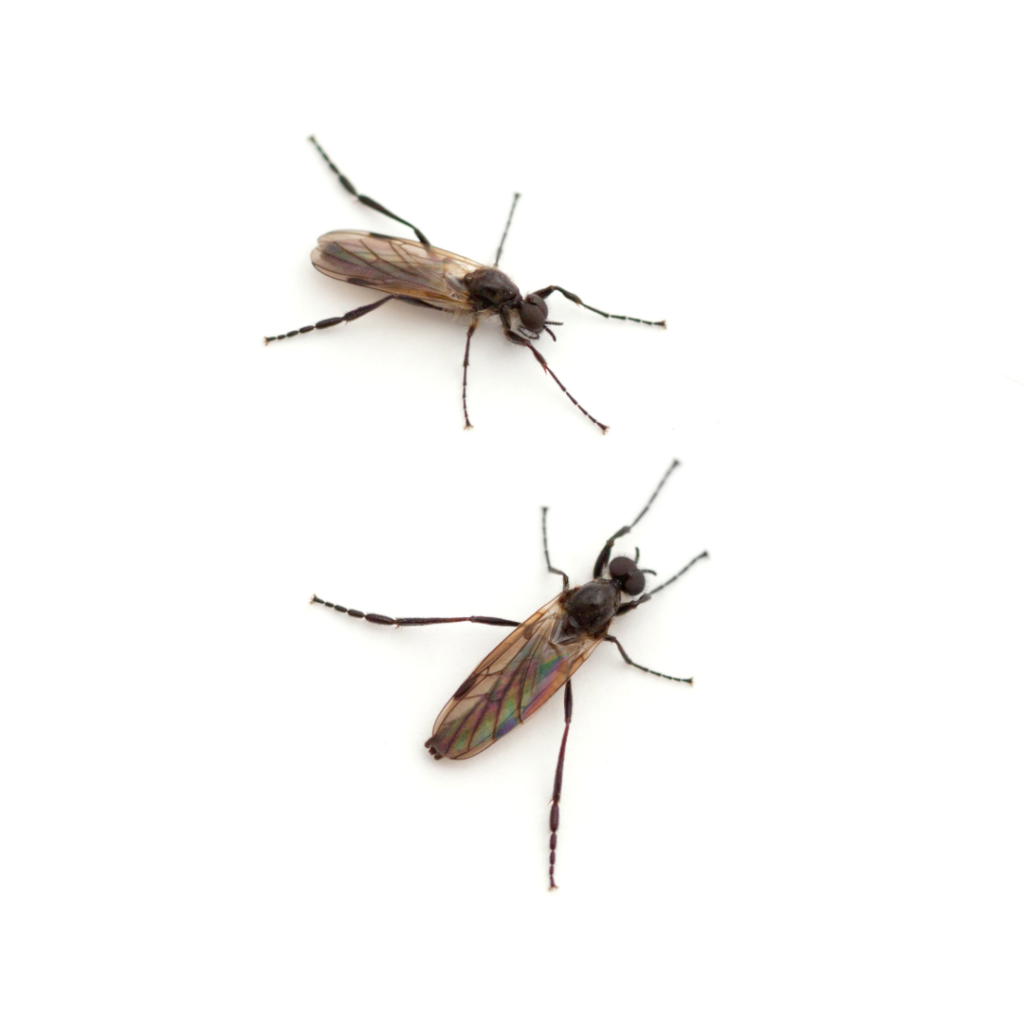
Fleas need blood to survive and reproduce. Using their sharp, piercing mouthparts, they feed on mammals and birds, with pets like dogs and cats being common hosts.
Life Cycle Stages
Fleas go through a complete metamorphosis with four distinct stages:
- Egg: These eggs are tiny, white, and oval-shaped. A female flea can lay hundreds of eggs in her lifetime.
- Larva: The larvae are worm-like and shy away from light, feeding on organic matter like dried blood and skin flakes.
- Pupa: In this stage, larvae spin cocoons, where they develop into adults. Depending on the environment, this stage can last from a few days to several months.
- Adult: Adult fleas emerge ready to feed on a host’s blood, starting the cycle over again.
Health Impacts
Historically, fleas were responsible for the bubonic plague. While the plague is rare today, fleas can still transmit diseases like flea-borne typhus and cat scratch fever and parasites like tapeworms to your pets.
Many pets suffer from flea allergy dermatitis (FAD), an allergic reaction to flea saliva. This causes severe itching, redness, and hair loss. Pets with FAD might start scratching after just one flea bite, leading to secondary skin infections or conditions like anemia.
Understanding Gnats
Gnats are typically small insects, ranging from 1 to 4 millimeters in length, with slender bodies and delicate wings. Depending on the species, they come in different colors, including black, brown, and gray.
Life Cycle Stages
Gnats undergo a complete metamorphosis with four distinct stages:
- Egg: Gnats lay eggs in moist soil, organic matter, or water, depending on the species.
- Larva: During this stage, the larvae, also known as maggots, may feed on decaying organic matter or plant roots.
- Pupa: Larvae transform into adults inside protective cocoons.
- Adult: The adult gnat emerges from the pupa and begins reproducing, starting the cycle anew.
Habitat and Behavior
Gnats thrive in moist spaces and environments, like damp soil, decaying organic matter, and areas with standing water. Depending on the species, they may inhabit indoor or outdoor settings.
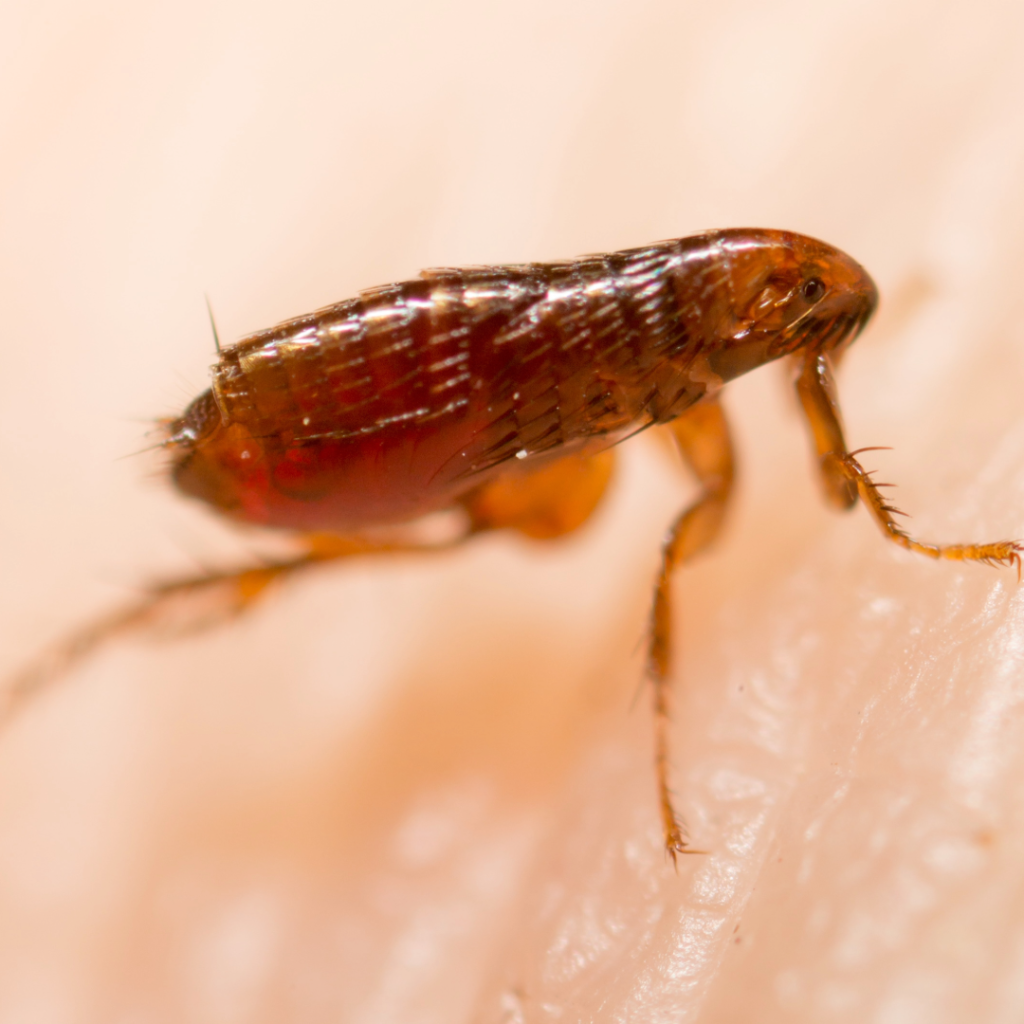
Most gnats feed on fungi, decaying organic matter, fruits, and other sugary substances. Despite their annoyance, most gnat species aren’t a threat to humans; fungus gnats, for example, are only interested in your produce and other decaying organic matter.
However, biting gnats, also known as biting midges or no-see-ums, can leave behind some painful marks. While not as dangerous as other biting or stinging pests, biting gnats will leave you with tiny, itchy, and irritating welts.
Main Differences Between Fleas and Gnats
Fleas and gnats may look similar at first glance, but they each have distinct characteristics and behaviors that set them apart.
Physical Characteristics:
Fleas: Fleas are wingless pests with flattened bodies designed for easy movement through fur and feathers. They have specialized mouthparts adapted for piercing skin and sucking blood.
Gnats: Gnats typically have slender bodies with delicate wings. While some species resemble small flies, others may be mistaken for mosquitoes. Depending on the species, gnats have mouthparts suitable for feeding on plant material, fungi, or blood.
Size and Shape Comparisons:
Fleas: Fleas are relatively small insects, measuring about 1 to 4 millimeters in length. While not impossible to spot, fleas may be challenging to detect in your pet’s thick fur, carpeting, rugs, and tall grass.
Gnats: Gnats vary in size but generally range from 1 to 4 millimeters in length. They’re easily mistaken for other tiny pests that may also frequent your kitchen or bathroom.
Preferred Environments:
Fleas: These pests thrive in warm, humid environments, often infesting animals’ fur or nesting in bedding, carpets, and upholstered furniture.
Gnats: Gnats prefer moist habitats, damp soil, decaying organic matter, or anywhere with standing water.
Feeding Habits and Hosts:
Fleas: Fleas are blood-feeding parasites that primarily target mammals and birds. They use specialized mouthparts to pierce the skin and feed on the blood of their hosts.
Gnats: Some feed on plant material, fungi, or organic matter, while others feed on the blood of humans and animals.
While fleas and gnats may share some similarities as small flying insects, their distinct characteristics, life cycles, and feeding habits set them apart. Understanding these differences is essential for effective pest management and control.
Difference Between Flea and Gnat Infestations
To prevent and control flea infestations, you’ll need to try a multifaceted approach:
- Regular Pet Grooming and Flea Treatments: Frequent grooming and veterinarian-approved flea preventatives can help prevent fleas from bothering your pets
- Cleaning and Vacuuming: Clean and vacuum your floors, carpets, and pet bedding to remove flea eggs, larvae, and adults.
- Yard Maintenance: Keep your outdoor areas well-maintained by mowing the lawn regularly and removing leaf litter to minimize flea habitats.
Preventing and controlling gnats requires targeting their preferred breeding and feeding areas:
- Managing Indoor Plants: Avoid overwatering your indoor plants to prevent overly moist soil, which can attract fungus gnats. Allow the soil to dry out between watering to discourage gnats from breeding.
- Dispose of Food Waste and Decaying Organic Matter: Seal and throw away food waste properly to prevent gnats from breeding in kitchen compost bins or garbage cans.
- Traps and Insecticides: Use sticky traps or flypaper to catch adult gnats indoors. You can use insecticides labeled for gnat control, but always remember to apply them according to manufacturer instructions.
While there are many differences between fleas and gnats, we have the solution for your flea problems in the Vancouver-Portland Metropolitan Area! Contact the experts at Natura Pest Control for more information!
